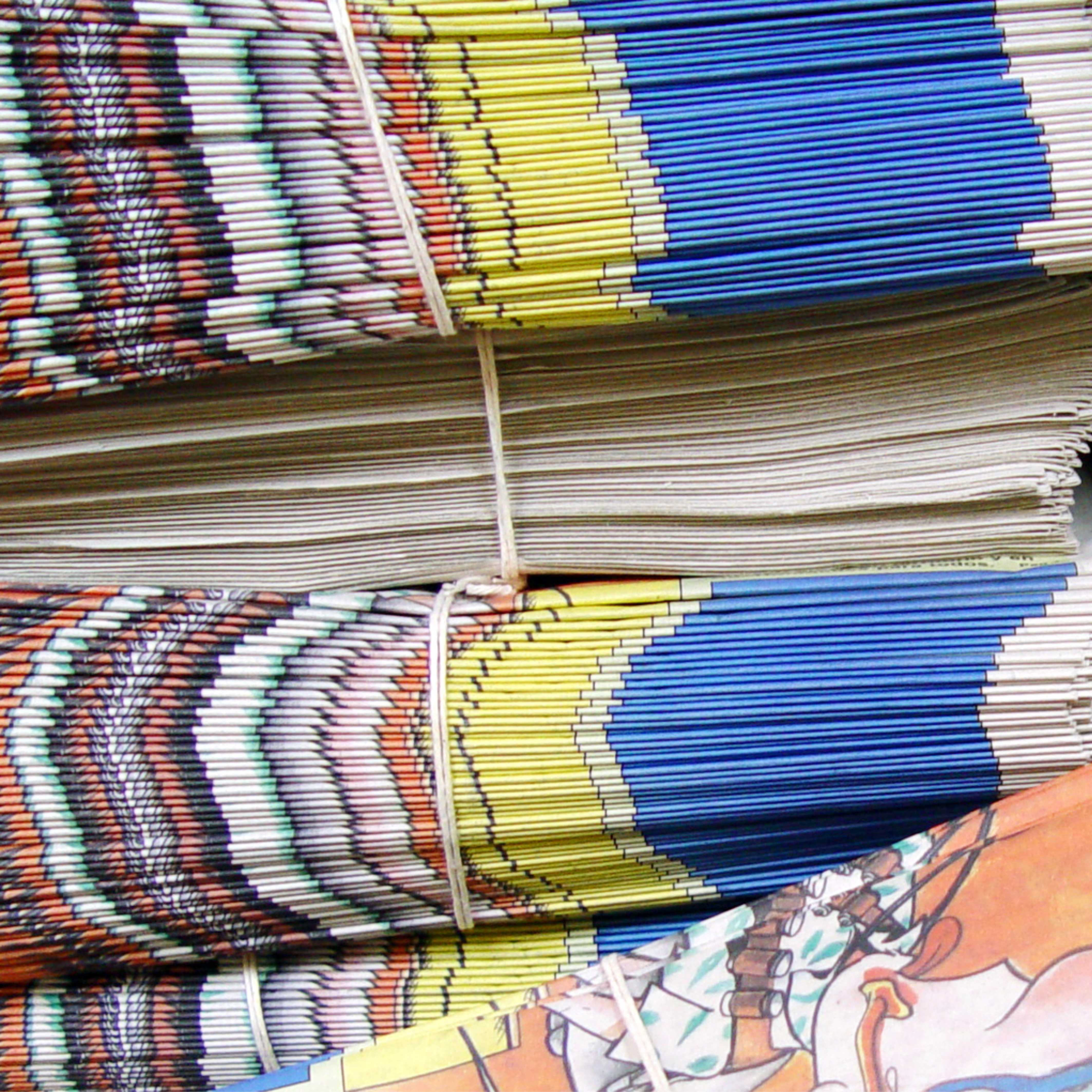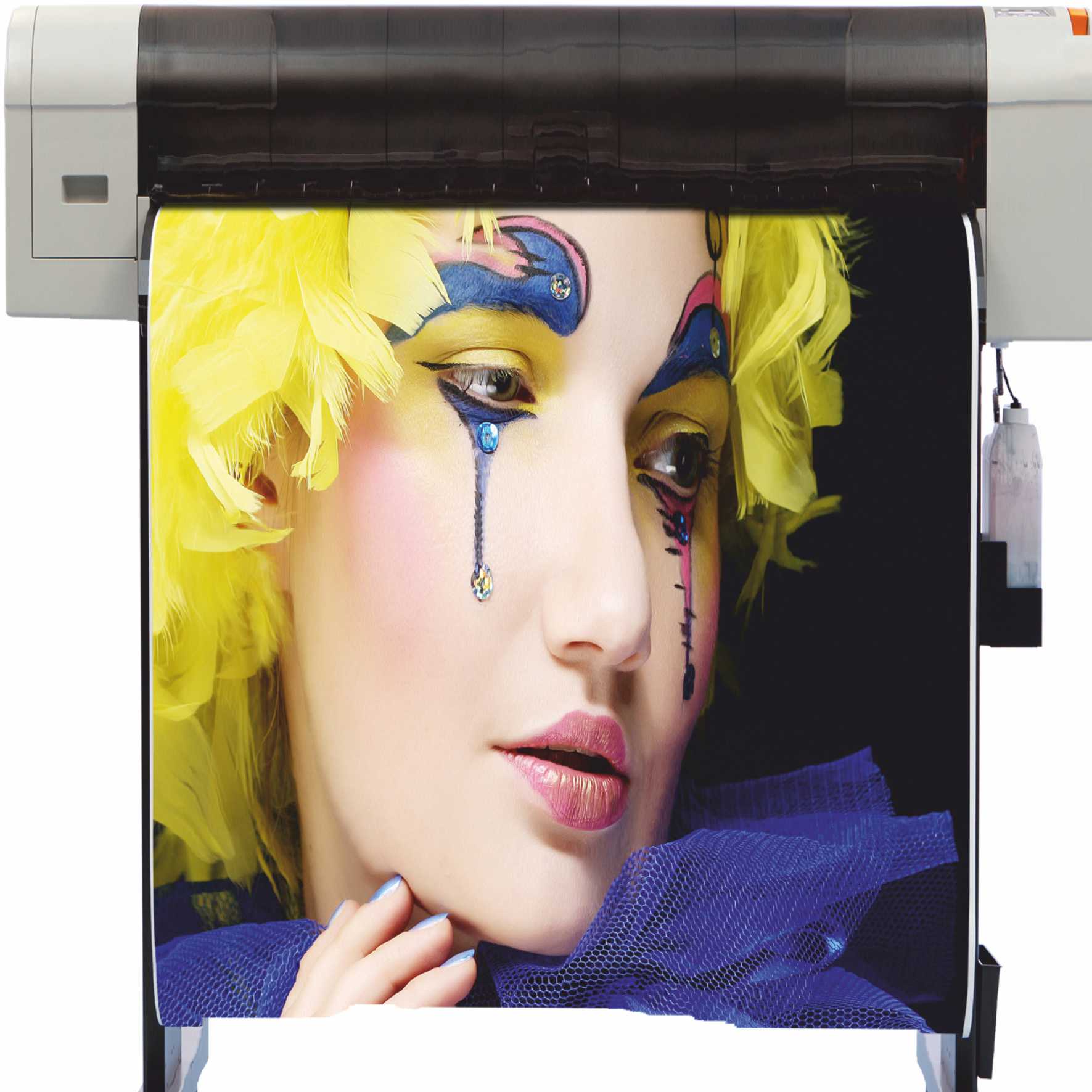 Canon imageRunner ADVANCE 4000 series aCanon Europe has launched the new imageRUNNER ADVANCE 4000 series with the introduction of four new black-and-white MFDs (multifunction devices) to complete its A3 imageRUNNER ADVANCE range. Canon said the release of these MFDs would ensure its ability to provide a full and complete range of these devices to support the needs of enterprises of all sizes.
Canon imageRunner ADVANCE 4000 series aCanon Europe has launched the new imageRUNNER ADVANCE 4000 series with the introduction of four new black-and-white MFDs (multifunction devices) to complete its A3 imageRUNNER ADVANCE range. Canon said the release of these MFDs would ensure its ability to provide a full and complete range of these devices to support the needs of enterprises of all sizes.
ImageRUNNER ADVANCE is available on 32 models following its launch in 2009. Some of these devices have since won industry awards, including BERTL and BLI Winter Picks awards in 2011. Sales figures supplied by Canon show that so far more than 170,000 imageRUNNER ADVANCE units have been sold in Europe and more than 440,000 worldwide. It said the series covered the full spectrum of end users from small offices to large corporate reprographics departments.
The additions to Canon’s imageRUNNER ADVANCE range are the imageRUNNER ADVANCE 4025i, 4035i, 4045i and 4051i which give a greater choice of A3 print speeds, from 25, 35 and 45ppm, including a new high-speed 51ppm printer.
Canon has highlighted key features of the imageRUNNER ADVANCE 4000 series such as an intuitive and customisable 21.3cm SVGA colour touch-screen to allow for easy operation. It said processing larger jobs was quick and efficient with duplex scanning, flexible media handling and a maximum paper capacity of up to 4,980 sheets. It added that the new printers had advanced finishing options which make producing quality printed materials in-house even easier.
Canon stressed that controlling and reducing print costs was easy with the imageRUNNER ADVANCE 4000 series. The new MFDs integrate with uniFLOW to provide the ability to assign cost centres, set restrictions, redirect print jobs and set up detailed tracking and reporting, to carefully manage print costs. UniFLOW can also enhance security over the way sensitive information is handled and printed, through uniFLOW Data Loss Prevention (DLP).
In addition, authentication options, secure print, mailbox and address filtering, as well as encryption and other security hardening options, ensure businesses meet important compliance requirements, which is particularly important for insurance, financial and legal professions.
Matthew Wrighton, Office Imaging Products Product Management and Strategy, Canon Europe, said: “With the addition of the new imageRUNNER ADVANCE devices, Canon now provides a complete portfolio of A3 multifunctional devices which provide our customers with extra choice on speed, price and functionality with broad integration, to suit the specific needs of any business.
“The success of the imageRUNNER ADVANCE range has been proven through the high level of demand we have seen from our customers, which is illustrated by our strong share of the A3 black-and-white market which reached 21 per cent in Q4 2011³. We are delighted to be adding a new high-speed device to the range with the 51ppm imageRUNNER ADVANCE 4051i, which will continue to help businesses to be more productive while producing high-quality results.”
The new imageRUNNER ADVANCE 4000 series will be available from May 2012.
³ Q4 2011 Figures, from Infosource, Western Europe, 2012
Copyright © 2012, DPNLIVE – All Rights Reserved
 Mimaki at FESPA 2012Japanese printer manufacturer Mimaki says FESPA Digital in Barcelona drew visitor numbers far in excess of the organisers’ best estimates. The company said it seemed at times as if most of them were parked on the Mimaki stand due to the raft of new product launches on display.
Mimaki at FESPA 2012Japanese printer manufacturer Mimaki says FESPA Digital in Barcelona drew visitor numbers far in excess of the organisers’ best estimates. The company said it seemed at times as if most of them were parked on the Mimaki stand due to the raft of new product launches on display.
An undoubted drawing point at the Mimaki stand was the worldwide unveiling of the much anticipated JV400 range of latex printers. Mimaki Europe said it had secured more than 150 pre–orders only part way through the exhibition. Available in 1.3m and 1.6m print widths, the printer – sporting a unique white latex ink – will have its UK and Irish launch on Hybrid Services’ (exclusive UK & Ireland distributors for Mimaki) stand at Sign + Digital UK this month. Some lucky visitors from these shores, however, got to view the machine at the exhibition in Spain, sneaking a march on the rest of the industry and witnessing it print at very low cure temperatures onto a broad array of materials. With one machine outputting 2 x CMYK at speeds over 18m2/h, the second of three machines on the Mimaki stand was configured with the seven–colour option – including the aforementioned white.
 Mimaki JV400-160LXDuncan Jefferies, marketing manager, Hybrid Services, said: “The effort and investment that our customers have made to visit FESPA appear to have been worthwhile for all concerned. The number of orders received during the four days of the show was unprecedented and reflects well on Mimaki’s commitment to bringing the sort of new products to market that our industry demands. It’s very encouraging to see so many companies making a positive commitment to investing in technology that will see them bring new applications, revenue streams and customers to their business.”
Mimaki JV400-160LXDuncan Jefferies, marketing manager, Hybrid Services, said: “The effort and investment that our customers have made to visit FESPA appear to have been worthwhile for all concerned. The number of orders received during the four days of the show was unprecedented and reflects well on Mimaki’s commitment to bringing the sort of new products to market that our industry demands. It’s very encouraging to see so many companies making a positive commitment to investing in technology that will see them bring new applications, revenue streams and customers to their business.”
Jefferies added: “The hugely anticipated Mimaki JV400 latex printer along with the very exciting TS34 dye sub machine will form the centrepiece of the Hybrid stand at Sign + Digital UK. We’ll also be bringing another printer that was very well received at FESPA – the latest option in Mimaki’s small format LED UV printer range – the UJF-3042HG. While FESPA was, quite simply, an incredible success, we’re now looking ahead to the show in Birmingham. We’re expecting the Hybrid resellers exhibiting at the show to enjoy a busy time and with us having three new printers, two software product launches and an array of new inks to show off, it’s going to be exciting for visitors and exhibitors alike.”
Copyright © 2011, DPNLIVE – All Rights Reserved
 Rodona with Spain's first HP T300 Colour Inkjet Web Press dedicated to print publishingHP’s latest news is that Rodona of Pamplona is using its digital printing technology to produce books with Spain’s first HP T300 Colour Inkjet Web Press dedicated to print publishing and an HP Indigo press 5500.
Rodona with Spain's first HP T300 Colour Inkjet Web Press dedicated to print publishingHP’s latest news is that Rodona of Pamplona is using its digital printing technology to produce books with Spain’s first HP T300 Colour Inkjet Web Press dedicated to print publishing and an HP Indigo press 5500.
Before acquiring the web press, Rodona (a subsidiary of ONA Industria Gráfica) could only print black-and-white books on a rotary offset press. It outsourced all other work.
According to ONA Industria Gráfica's managing director, Alberto Senosiain, Rodona's HP T300 Colour Inkjet Web Press is one of the most productive publishing presses in Europe. “With today’s book market demanding smaller print runs and ever more titles, we decided, with our customer, to explore other opportunities and other forms of printing,” he said.
Recent technological advances have ushered in new forms of production that facilitate better adaptation to changing market conditions. With the support of its parent company, Rodona has expanded into printing customised or standard books and magazines in black-and-white or colour. It can produce these in small or in gradually increasing print runs with reduced storage requirements.
Using its new digital printing technology firepower Rodona can offer its customers unique solutions. This paradigm shift in the concept of print publishing has now led to a complete overhaul of the company.
“When we embarked on this project, we were looking for companies that could enable us to fulfil our objectives effectively,” added Senosiain. “HP fully understood our needs and we quickly formalised our agreement. We wanted a solution that was closest to offset printing, so we installed an HP Indigo press 5500 for covers and an HP T300 Colour Inkjet Web Press for printing interiors in black-and-white or colour. When planning the implementation of our new production model, our initial concern wasn’t so much the printing technology involved, but rather the quality and, of course, the end price of the product. We now have little doubt that the future of many printed products lies in inkjet.”
It was the market itself that led them to the HP T300 Colour Inkjet Web Press, said Senosiain. “However, it wasn’t just about evaluating the machine, which is not always the most important aspect,” he added. “We were looking for a company that was betting big on this technology. In short, we weren’t just looking for a supplier – we wanted a technology partner, too. The company that offered us the best all-round conditions was HP, and time has shown that our decision was the right one.”
Senosiain said the two presses combined provided the flexibility and capacity needed in a customised, individualised product manufacturing environment with high industrial output.
In addition to using these advanced print technologies, products are finished using the bMuller Martini ookbinding system, arguably one of the most sophisticated of its kind in the world.
Senosiain highlighted other benefits to Rodona’s business.
“We can now achieve significant savings on storage costs and have fewer faulty products,” he said. “The system has also allowed us to start producing other products that are either not viable or very expensive with conventional technologies, such as customised books on small or very small print runs. This technology is all-embracing. I think the focus will very much be on print-on-demand book sales in the future. But currently, the main niche for this printing technique is clearly short runs.”
Copyright © 2011, DPNLIVE – All Rights Reserved
Following the debut of its TS34 dye sublimation printer, Mimaki will enhance its already broad range of models for this market with the launch of what it terms “the world’s fastest sublimation inkjet printer” along with a new ink. Designed to boost productivity for the textile, apparel and soft signage markets, the Mimaki TS500-1800 printer and the new Sb300 sublimation ink are expected this April.
Sakae Sagane, managing director, Mimaki Europe, said: “We are excited to bring to market the world’s fastest dye sublimation printer, capable of printing at 150m2/h on transfer paper. This printer is ideal for the production of textile apparel and soft signage, both of which are seeing growth in run lengths appropriate for digital printing.
“We believe the TS500-1800 will enable manufacturers in this sector to capitalise on the growing demand for shorter runs and customised or even personalised products in these two burgeoning digital markets. Our new ink delivers brilliant colour, and using RasterLink 6, print operators can easily convert special colours to specific Pantone references to ensure colour integrity.”
Commenting on the new machine, Duncan Jefferies, marketing manager for Hybrid Services, Mimaki’s exclusive UK and Ireland distributor, said: “The combination of the new Mimaki printer and ink should allow customers seeking a volume dye sublimation solution the ability to deliver a massive increase in productivity to their business. Mimaki’s digital textile heritage is enviable so we’re confident that the larger polyester printing companies will see this as an important announcement.”
Jefferies highlighted some innovative features of the TS500-1800 which he believes set it apart. T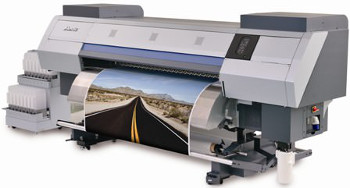 Mimaki TS500 1800hese include:
Mimaki TS500 1800hese include:
- Unmatched printing speed for sublimation paper at 150m2/h in high-speed mode. The TS500-1800 uses newly developed print heads that achieve a maximum speed in four- or six-colour mode. The printer includes a three staggered array of six print heads.
- Mist removal filter to prevent problems caused by ink misting and enhance the stability of print operations by suctioning the mist inside the printer.
- The Mimaki degassing module (MDM-20) eliminates any gases or bubbles that can occur in inks during the printing process, decreasing the likelihood of nozzle blockage and improving the accuracy of ink dot placement. In addition, the module enables the printer to use un-degassed bottled inks instead of conventional degassed ink packs, further reducing ink costs.
- New dye sublimation ink. Mimaki has developed a new ink, optimised for dye sublimation printing and for use with the TS500-1800. The Sb300 ink offers an attractive price point, dries quickly and produces brilliant colours. Mimaki Sb300 ink is available in six colours – blue, magenta, yellow.
- Mimaki’s auto media feeder (AMF) provides stable feeding and take-up of print media, eliminating much of the need for operator intervention during printing
- Larger roll media size – the TS500-1800 can accept rolls of media up to 60kg and 300mm in diameter further improving operator productivity by eliminating the need for frequent media changes. Larger orders can be continuously printed without interruption, or batches of smaller orders using the same media can be easily handled.
More details on Mimaki products can be found at www.hybridservices.co.uk
Copyright © 2011, DPNLIVE – All Rights Reserved
 Mimaki-TS34-1800AMimaki has publicised its line-up for FESPA Digital 2012, Europe’s largest event for the digital wide-format print industry which runs February 21st-24th in Barcelona. The leading manufacturer of wide-format inkjet printers and cutting machines for the sign/graphics, textile/apparel and industrial markets can be found on Stand G60.
Mimaki-TS34-1800AMimaki has publicised its line-up for FESPA Digital 2012, Europe’s largest event for the digital wide-format print industry which runs February 21st-24th in Barcelona. The leading manufacturer of wide-format inkjet printers and cutting machines for the sign/graphics, textile/apparel and industrial markets can be found on Stand G60.
“We are very excited about the innovations we will be sharing at FESPA Digital 2012,” says Mike Horsten, marketing manager at Mimaki. “Our stand will include both new products and new features which will reinforce our dedication to environmental sustainability and showcase our philanthropic efforts.”
Horsten said Mimaki would highlight its nature education program, an initiative that supports the nature and wildlife education of youth and children in Spain with special fun activities during the show. In addition, the company will host a press conference on FESPA’s opening day at 10.30 am in the press conference room, South Access when it will introduce and launch a new range of innovative products.
Mimaki makes Sustainability a key focus of the show
“Visitors to our stand at FESPA Digital 2012 will clearly see our commitment to sustainability,” says Horsten. “We are proud of the small environmental footprint of our products, an important factor in the sign and display business today. Mimaki will be launching many new innovations at FESPA and we will clearly demonstrate our leadership in the market.”
New product highlights
A highlight of FESPA Digital 2012 will mark the European debut of Mimaki’s new TS34-1800A Sublimation Transfer Inkjet Printer, first announced in November 2011. This was designed specifically for the sublimation transfer market with the emphasis on high speed and quality. Sublimation transfer printing is widely utilised for sportswear applications due to the elasticity and quick-drying capability of polyester material. It is also used in the growing market for soft signage applications, such as flags, retail in-store banners and tapestries. The company says the TS34-1800A is capable of printing up to 32 m2/h at 540 x 720dpi.
Mimaki will also showcase its range of UV flatbed products, including the JFX-1631plus and the recently launched UJF-3042FX.
• The Mimaki JFX-1631plus features high precision printing up to 1200dpi allowing even 3pt characters to be legibly printed, at speeds of up to 23.6 m2/h with a post-curing unit. It also offers an optional roll unit for roll-to-roll printing. The JFX-1631plus has print area of 160 x 310cm. The series is also available as the JFX-1615plus with 160 x 150cm print area.
• The UJF-3042FX, a desktop UV flatbed, prints directly on materials up to 5cm thick with excellent print quality of up to 1440 x 1200 dpi with a maximum print area of 300 x 420mm and energy efficient LED curing.
Mimaki pointed out that for both printers, users can now choose from three UV inks to ensure they have the best one to suit their application. It said its LH-100 hard UV ink excelled in scratch and chemical resistance as well as colour reproduction. The second ink, LF-200 flexible UV ink, enables stretching of ink up to 200 per cent, and the third, LF-140, offers a strong gradation in six-colour printing (CMYK + LcLm) and is more flexible than LH-100 hard ink.
Mimaki’s new PR-100 inkjet primer is also available for these printers to expand the range of substrates that can be utilised. PR-100 inkjet primer aims to improve adhesion and enables printing on materials that normally would not be suitable for inkjet printing. Flexible ink printing is new to the UJF-3042FX. White and high gloss clear inks are also available.
More detail on Mimaki products, including those featured at the show, can be found at www.hybridservices.co.uk
Copyright © 2011, DPNLIVE – All Rights Reserved
“HP FB225 Scitex Ink opens new application possibilities for HP Scitex FB7600 Industrial Press users”
HP’s new HP FB225 Scitex Ink has met AgBB criteria for health-related evaluation of volatile organic compound (VOC) emissions of indoor building products.
Testing was carried out by Air Quality Sciences which specialises in providing solutions for improving indoor air quality and reducing exposure to airborne pollutants. Its mission statement says it “partners with manufacturers, sustainable product programs, and purchasers to evaluate products, materials, and the ways in which they impact indoor environments and human health”.
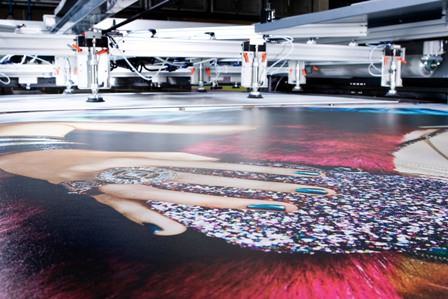 Users of the HP Scitex FB7600 Industrial Press can benifit from the new HP FB225 Scitex InkAir Quality Sciences used the AgBB evaluation procedure for VOC emissions and determined that HP FB225 Scitex Ink complied with AgBB requirements. The AgBB Committee, set up in 1997, includes representatives from seven German national and regional health and environmental organisations. Its testing procedures and standards are regarded as an international standard for health-related VOC emissions.
Users of the HP Scitex FB7600 Industrial Press can benifit from the new HP FB225 Scitex InkAir Quality Sciences used the AgBB evaluation procedure for VOC emissions and determined that HP FB225 Scitex Ink complied with AgBB requirements. The AgBB Committee, set up in 1997, includes representatives from seven German national and regional health and environmental organisations. Its testing procedures and standards are regarded as an international standard for health-related VOC emissions.
AgBB compliance follows the GREENGUARDSM Children & Schools certification received earlier by HP FB225 Scitex Ink in the US. The ink also received certification under the GREENGUARDSM Indoor Air Quality Certification Program for Low Emitting Products.
HP FB225 Scitex Ink was developed for the new HP Scitex FB7600 Industrial Press, a high-end production machine for producing high-quality graphics on a wide range of substrates from standard POP/POS corrugated board and papers to backlit films and plastic and coated materials. Included in these are materials such as foam PVC, PVC sheets, polystyrene (HIPS), fluted polypropylene, polycarbonate, polyethylene, synthetic paper, SAV, foamboard, paper, corrugated, PETG, Yupo and Alu-Dibond.
HP has also said the new HP FB225 Scitex Ink would benefit large format print service providers (PSPs) which have HP Scitex FB7500 Industrial Presses that have been upgraded with the HP Scitex FB7500 Industrial Press Upgrade Kit option by expanding their expanding application range. It said flexible and rigid materials can be printed with cross-hatch level adhesion, enabling these users to increase their offering to customers.
The company claims the HP FB225 Scitex Ink also is more flexible after curing than its predecessors, so the chances of chipping and cracking during folding and creasing is greatly reduced.
“This is the first UV-curable ink ever that complies with both these indoor air emissions standards,” said Xavier Melisse, EMEA (Europe, the Middle East and Africa) Scitex Supplies Category Manager. “Prints produced with HP FB225 Scitex Ink on low emitting media have reduced odour and the fact that the inks used to produce them meet these standards offers additional reassurance about their suitability for indoor use. This opens new opportunities to HP Scitex FB7600 and upgraded HP Scitex FB7500 Industrial Press users.”
HP hopes that with increasingly environmentally conscious end-users, the ability of PSPs to offer products using materials designed with the environment in mind will provide differentiation and give these companies a competitive edge over their competitors.
Stephen Goddard, environmental leadership programme manager for HP’s Graphics Solutions Business, added: “The fact that the inks have met these standards underlines the point that signs and displays produced with them are suitable for use even in a sensitive indoor environment such as a school or hospital.”
More information is available at www.youtube.com/hpgraphicarts or you can follow HP on www.twitter.com/hpgraphicarts.
Copyright © 2011, DPNLIVE – All Rights Reserved
Bob Tallent,
Thursday 19th January @ 4.30pm
 With the recent shipping catastrophes – in Ireland, twin rig trawler Tit Bonhomme and in Italy cruise liner Costa Concordia – I got to thinking about sea disasters, the captains, the owners and the drowned.
With the recent shipping catastrophes – in Ireland, twin rig trawler Tit Bonhomme and in Italy cruise liner Costa Concordia – I got to thinking about sea disasters, the captains, the owners and the drowned.
The Tit Bonhomme sank on Sunday morning close to Glandore Harbour. Its position and the foul weather have hampered the search for bodies. The coastguard is co-ordinating the search, which includes dive teams, teams on the shore, trawlers outside and inside the harbour, helicopters from Shannon and Waterford and many smaller boats and kayaks checking dozens of narrow, isolated coves. The search expanded to include inaccessible caves and a Civil Defence heights specialist crew of six conducted the first abseiling mission down a 50ft drop.
Egyptian crewman Mohammed Add Elgwad (40) survived. Today, divers recovered the bodies of 21-year-old Kevin Kershaw and 26-year-old Attia Shaban.
The Tit Bonhomme's skipper Michael Hayes, 52, and Egyptians Wael Mohammed and Saied Ali Eldin are still missing.
Kevin Kershaw from Dublin, was on his first outing as a fisherman. He had taken up a new role as a fisherman in a bid to make enough money to emigrate to Australia and had only joined the Union Hall based trawler Tit Bonhomme at the weekend when disaster struck. Mr Shaban had been in Ireland for two years and had recently moved to Skibbereen, from Union Hall.
The residents of west Cork’s Union Hall have been wonderfully supportive, providing food, drinks, beds and showers, as well as phones and computers for the relatives and rescue teams.
Unlike Capt Francesco Schettino of the Costa Concordia, Michael Hayes went down with his ship. The search for his body continues. It appears that Capt Schettino was one of the first people off his vessel although he claims he tripped and fell into a lifeboat while co-ordinating the evacuation and could not get back on the ship. In a damning recording of a phone conversation between him and an extremely irate coast guard officer, the latter insists Schettino return to the ship and the captain refuses. Schettino is now under house arrest and under investigation for manslaughter.
There are four things to know about maritime disasters:
- Ships sink regularly
The wreck of the Costa Concordia is an extraordinary example of either technological failure or human error. Indeed, while the investigation is ongoing, the early reports aren’t good for Capt Schettino because he disembarked before all passengers left. While a disaster on this scale is rare, ships sink all the time. John Konrad, a former ship captain who writes about maritime technology, says a ship sinks about once a week on average. Most aren’t reported because they’re not disasters on the scale of the Costa Concordia. - Modern ships can be low-tech.
GPS, radar, satellite communications, equipment sensors, and computerised monitoring are all commonplace now. Yet right now, only about 10 per cent of ships have internet service, which hinders ship-to-ship communication. That’s because the price of high-speed internet via satellite is about $15,000 per ship, though that figure is coming down. New radar technology is making its way onto ships, but most mariners are still staring at old-fashioned black-and-green radar set. - Disasters like the Concordia are not as common as they used to be.
The ship’s survivors compared their experience of the ship listing and panic taking over to the sinking of the Titanic. Three enormous changes have taken place in the 100 years since Titanic went down:- Ships can come to the rescue more quickly: After the Titanic, the US Coast Guard created the Automated Mutual Assistance Vessel Rescue System, which tracks commercial ships around the world, and there are few places left that a rescue boat couldn’t reach within a day.
- Ships are far more technologically sophisticated in 2012.
- There aren’t as many people at sea anymore. In Titanic’s day, ships were the way to travel the world. Today, there are fewer ships on the seas and cruise liners like the Concordia stick primarily to safe areas like the Caribbean and Mediterranean rather than the harsh North Atlantic.
- People still matter
A person still has to be in charge. No matter how far technology advances, you need a human in charge who knows what to do, especially when something goes wrong. Capt Schettino has been accused of serious negligence. However, it’s the normal interplay of crew and computer systems that’s worrying.It takes more time to develop the human element than to develop new systems. A $1 billion ship can be built in a year, but developing a $1 million captain to pilot that ship takes 10 years.
The evacuation of the Concordia has been compared with the Titanic disaster. Swiss survivors even told La Tribune de Genève newspaper that Celine Dion’s My Heart Will Go On, theme song to the 1997 film Titanic, was playing in their dining room as the cruise liner hit the rocks. In response to reporters, Capt Schettino claimed he and his crew were the last to leave the stricken vessel, which had around 4,200 people aboard. We all know now that this is untrue.
Five Concordia passengers have been confirmed dead and 20 more are still missing.
Schettino has cited incorrect information on nautical charts for the accident. But then he seems to have contradicted himself by reportedly telling the investigating judge in the city of Grosseto that he had sailed close to the island of Giglio to salute a former captain who lived on the Tuscan island: “I was navigating by sight because I knew the depths well and I had done this manoeuvre three or four times,” he allegedly said.
Meanwhile, satellite tracking information by the shipping journal Lloyd’s List Intelligence shows the Costa Concordia had sailed even closer to the island on a cruise last August. Lloyd’s List said the vessel passed within 230m of the island on August 14 last to mark La Notte di San Lorenzo – the night of the island’s shooting stars festival. And the route deviation had apparently been authorised by Costa Crociere.
Richard Meade, editor of Lloyd’s List, said: “The company’s account of what happened, of the rogue master [Capt Schettino] taking a bad decision, isn’t quite as black and white as they presented originally. This ship took a very similar route only a few months previously and the master would have known that.”
This saga continues. People are dead. The search for bodies continues. The cruise industry will not get off lightly.
 | 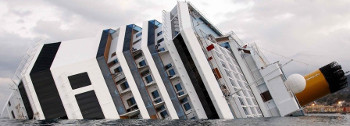 |
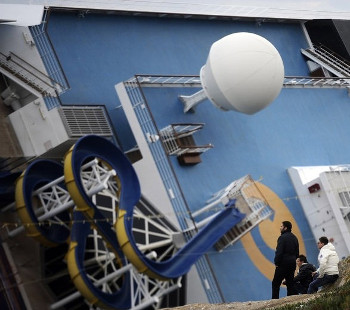 |  |
Copyright © 2011, DPNLIVE – All Rights Reserved
The latest MPV Marketing at Retail Show takes place at Porte de Versailles, France, March 27th-29th, 2012. This biennial event for all points of purchase marketing solutions is organised around three areas of activity: POP advertising, merchandising / digital media / store fittings, design.
 LOGO MPV 2012The objective of this year’s show is to introduce professionals to a wide range of solutions and expertise, with a special focus on market trends!
LOGO MPV 2012The objective of this year’s show is to introduce professionals to a wide range of solutions and expertise, with a special focus on market trends!
The event organisers say 2012 brings an enhanced offering with a new skill centre for marketing services. This new centre aims to bring together all existing marketing services to promote point-of-sale purchases: ‘shopper’ studies, performance measurement tools, sales animations, merchandising, logistics, relationship marketing, and so on.
This new cluster will be part of the shows four previously existing divisions:
-Shop fitting / retail design: design agencies, shop layout or window dressing;
(This will also include the concept and design area, which presents design and environment agencies).
-POP/shop furniture: POS, point-of-sale information, presenters, testers, etc;
-Materials and components: raw materials, tiles, LEDs, wall coverings, etc.
-In-store digital media | mobile marketing: screens, content, interactive solutions, consultancies, etc.
 Logo Sac Salon MPV 2012This year hosts a variety of special activities and events organised during the exhibition: thematic conferences, case studies, exhibitor workshops, applications for the point-of-sale of tomorrow, spaces dedicated to concept/design and innovative sustainable materials.
Logo Sac Salon MPV 2012This year hosts a variety of special activities and events organised during the exhibition: thematic conferences, case studies, exhibitor workshops, applications for the point-of-sale of tomorrow, spaces dedicated to concept/design and innovative sustainable materials.
In addition, the awards ceremony for the ‘POPAI Awards Paris’ will conclude the 2012 edition of the exhibition. This competition is designed to recognise the best creations of the year in point-of-sale, digital media, commercial architecture and layout from professionals.
About MPV exhibition 2012
Organised by Reed Expositions on behalf of POPAI France (the French Institute of Communication and Advertising at the Point-of-Sale), the MPV exhibition (Marketing Point de Vente) is a biennial event dedicated to marketing solutions for point-of-sale. The 2012 exhibition aims to bring together all retail professions that prompt shopper purchases (manufacturers, designers, advertisers, agencies and suppliers). Held over three days, the event offers professionals the opportunity to network and share strategies that anticipate the challenges which tomorrow’s point-of-sale will bring.
www.reedexpo.com/en/Events/1672
Copyright © 2011, DPNLIVE – All Rights Reserved
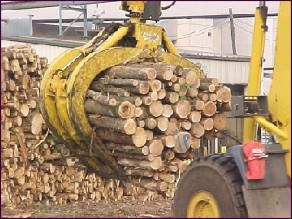
Prices continued on a downward slope on the European pulp market in December and the trend is likely to continue. A lower demand in the last month of the year, confusion and uncertainty in the business climate, coupled with an inability and unwillingness on the part of pulp mills to undertake necessary production cuts are some of the reasons for the developments. While hardwood pulp producers are trying to increase their prices, market analysts are convinced that the downward trend will continue in the case of softwood pulp. Manufacturers say that NBSK prices are expected to drop further in December which will be similar to the one in November.
Copyright © 2011, DPNLIVE – All Rights Reserved

